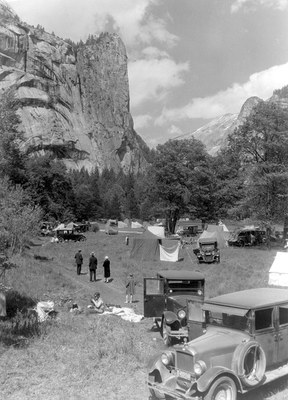
On the afternoon of July 8, 1932, E.P. Meinecke sat at his typewriter in a Honolulu hotel room banging out a report to his supervisor. A plant pathologist in the San Francisco office of the US Department of Agriculture, Meinecke had come to consult at Hawaii National Park, but now he was finished and awaiting his boat to California. For several pages, he detailed his successful work in the park, but then the pathologist changed the subject. “Have you any funds” for travel, he asked, “and if so, how much can I spend?” The issue was on Meinecke’s mind because he was being badgered to appear at national parks across the country. “The demands for advice and visits are coming fast and furious,” he moaned. “The Yosemite is howling, the Sequoia Park bombards me with letters and the Mesa Verde is putting all its new 6-year camp ground plans off until I come to help them. I almost wish I had never written that ‘Camp Ground Policy.’” Despite Meinecke’s exasperation and momentary regret, he and his “Camp Ground Policy” sit at the center of this presentation. An under-recognized pioneer at the frontier between American culture and nature, Meinecke had unwittingly been drawn into an emerging environmental discussion about landscape design, policy and practice in America’s most popular protected areas. Nothing in his formal training suggests that he would play a central role in the ongoing tension between America’s modern and anti-modern tendencies, yet it was Meinecke who imagined and designed what became one of the nation’s most popular settings for engaging nature – the automobile campground.
Terrence Young is Professor Emeritus of Geography at California State Polytechnic University of Pomona. The Johns Hopkins University Press released his book, Building San Francisco's Parks, 1850-1930, in February 2004. It explores the links between concepts of nature, landscape design, and social order in the struggles over park making in San Francisco. Cornell University Press published his latest book, Heading Out: A History of American Camping, in June 2017. It explores how camping is linked to pilgrimage, modernization, and technology.